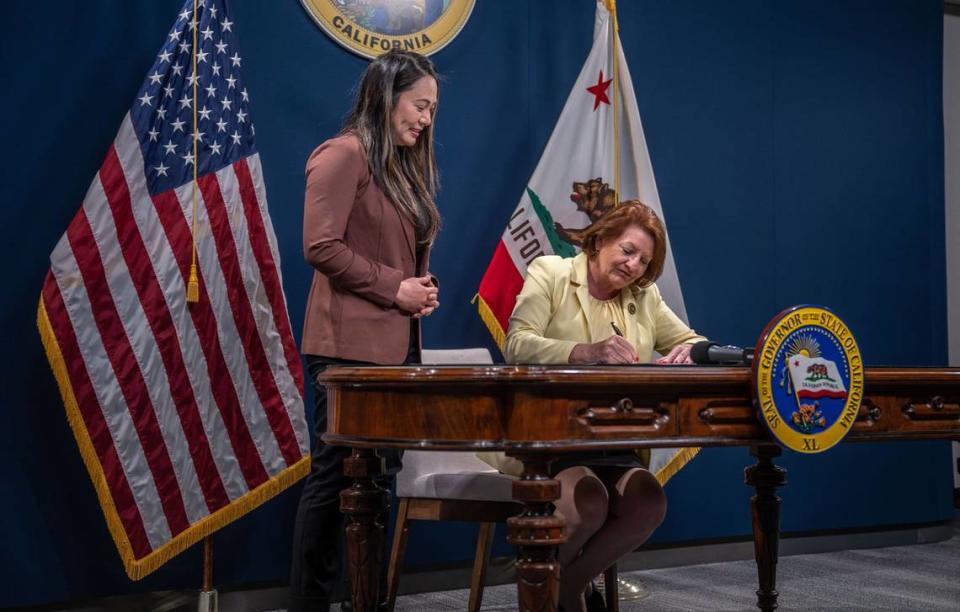For the first time ever, the California Senate is poised to achieve gender parity | Opinion
- Oops!Something went wrong.Please try again later.
California at its best can be forward-thinking and enlightened. But throughout most of our state’s history, the halls of power inside the state Capitol have been an old boys club. In the 174 years California has been a state, the Legislature has never achieved gender parity. That could change this year.
For the first time ever, the 40-member state Senate appears to be on its way to gender parity — and there’s a strong possibility women will gain a historic majority. Women also have a chance of reaching parity in the California Assembly this year, or at least coming close.
It’s taken much too long to get to this point. Women didn’t win a seat in the Legislature until 1918, when four female candidates won seats in the assembly, 68 years after California became a state. For the next half-century, only 10 more women served in the assembly, and a woman wasn’t elected to the senate until 1976.
Opinion
The California Legislative Women’s Caucus, which we lead, was founded in 1985 by 15 women who were then serving in the 120-member Legislature. Since its inception, the caucus has advocated on behalf of the diverse interests of women, children and families throughout California. We’ve worked tirelessly to increase participation and representation of women in our state government.
For our caucus’ first 30 years, we made slow, steady progress toward gender parity. But by the mid-2010s, it felt like we had hit a glass ceiling. For close to a decade, the total number of women in both houses of the Legislature oscillated between 22 and 28.
We had some significant victories: We’ve had three women speakers of the assembly; and Sen. Toni Atkins, who also served as speaker, was our first woman senate president pro tempore, serving from 2018 until just last month.
As Atkins rose to her historic leadership position, members of the Women’s Caucus launched a concerted effort to use our influence to reach gender parity in both houses.
Members of the caucus spoke at town halls and other forums about the lack of gender parity in our statehouse and encouraged women to run for office. We leaned into our power, opening doors for women up and down the state who were willing to put themselves forward.
Our concerted effort included reaching out to organizations who shared our objective, such as Emerge California, the National Women’s Political Caucus, Planned Parenthood, Close the Gap, county Commissions on the Status of Women and many community-based women’s organizations working to recruit and support women candidates.
It paid off. In the November 2018 election, a record number of women — 38 — won seats, representing 32% of both houses of the Legislature. Inspired by the increase in our numbers, we continued our campaign to raise the importance of women representation.
By the November 2022 election cycle, we shattered another record: The number of women in the senate and assembly had reached 50 — roughly 42% of the total.
As we grew in numbers, we also grew in influence. Today, for example, women serve as the majority leaders of both houses and as chairs of the powerful appropriations committees. The assembly now has the largest number of women committee chairs in its history.
With the votes cast in the recent March primary, California voters assured that yet another record for women in the Legislature will be broken this November. We are confident that, in the senate, California will at least reach gender parity if not an outright majority. The number of women projected for the assembly is looking very promising as well.
Finally, after 170-plus years, our Capitol will no longer resemble an old boys club. For the first time ever, we will celebrate equal representation and leadership of women.
State Sen. Nancy Skinner (D-Berkeley) and Assemblymember Cecilia Aguiar-Curry (D-Winters) are chair and vice chair of the California Legislative Women’s Caucus.




